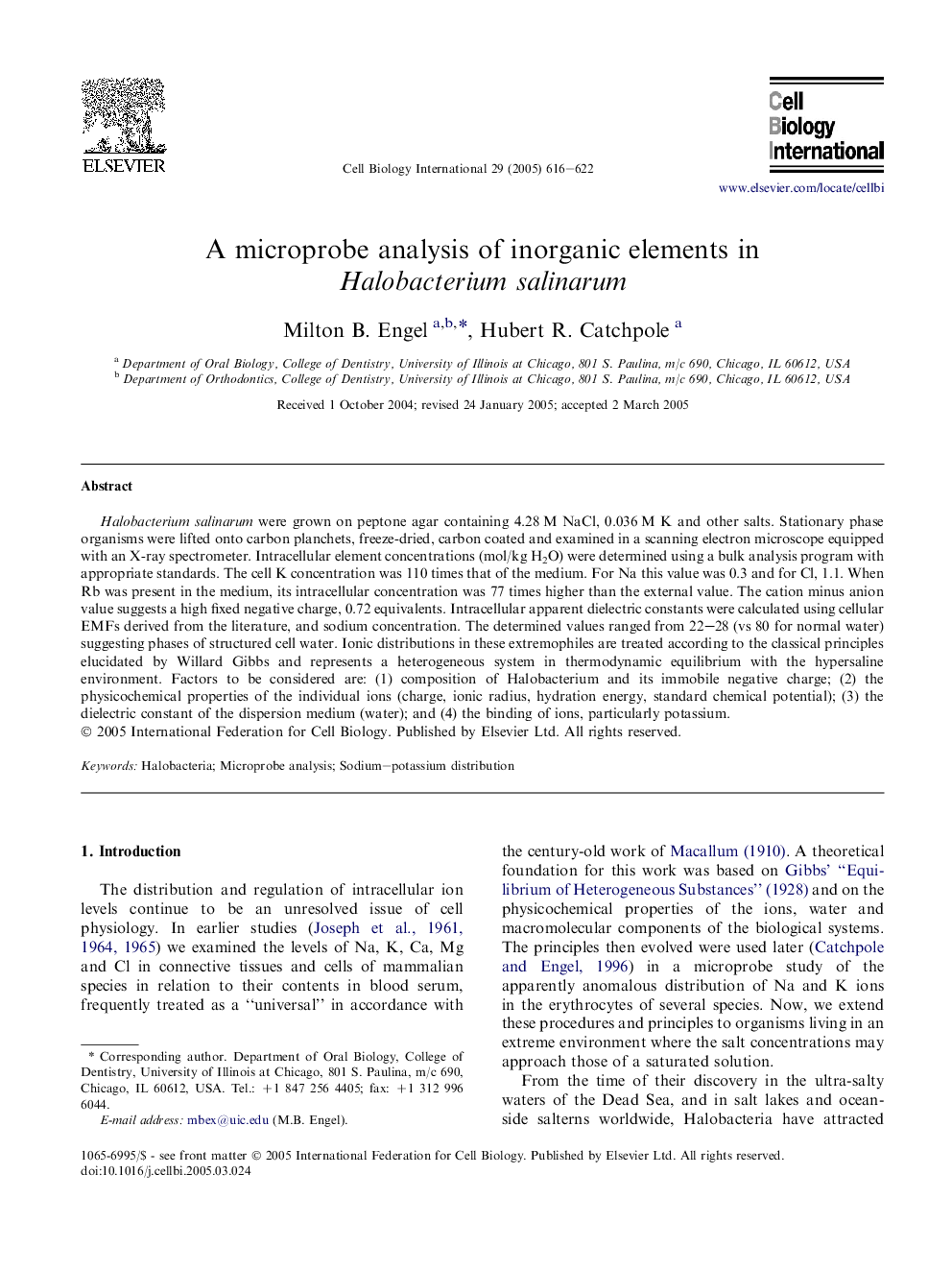| Article ID | Journal | Published Year | Pages | File Type |
|---|---|---|---|---|
| 10881800 | Cell Biology International | 2005 | 7 Pages |
Abstract
Halobacterium salinarum were grown on peptone agar containing 4.28Â M NaCl, 0.036Â M K and other salts. Stationary phase organisms were lifted onto carbon planchets, freeze-dried, carbon coated and examined in a scanning electron microscope equipped with an X-ray spectrometer. Intracellular element concentrations (mol/kg H2O) were determined using a bulk analysis program with appropriate standards. The cell K concentration was 110 times that of the medium. For Na this value was 0.3 and for Cl, 1.1. When Rb was present in the medium, its intracellular concentration was 77 times higher than the external value. The cation minus anion value suggests a high fixed negative charge, 0.72 equivalents. Intracellular apparent dielectric constants were calculated using cellular EMFs derived from the literature, and sodium concentration. The determined values ranged from 22-28 (vs 80 for normal water) suggesting phases of structured cell water. Ionic distributions in these extremophiles are treated according to the classical principles elucidated by Willard Gibbs and represents a heterogeneous system in thermodynamic equilibrium with the hypersaline environment. Factors to be considered are: (1) composition of Halobacterium and its immobile negative charge; (2) the physicochemical properties of the individual ions (charge, ionic radius, hydration energy, standard chemical potential); (3) the dielectric constant of the dispersion medium (water); and (4) the binding of ions, particularly potassium.
Keywords
Related Topics
Life Sciences
Biochemistry, Genetics and Molecular Biology
Biophysics
Authors
Milton B. Engel, Hubert R. Catchpole,
